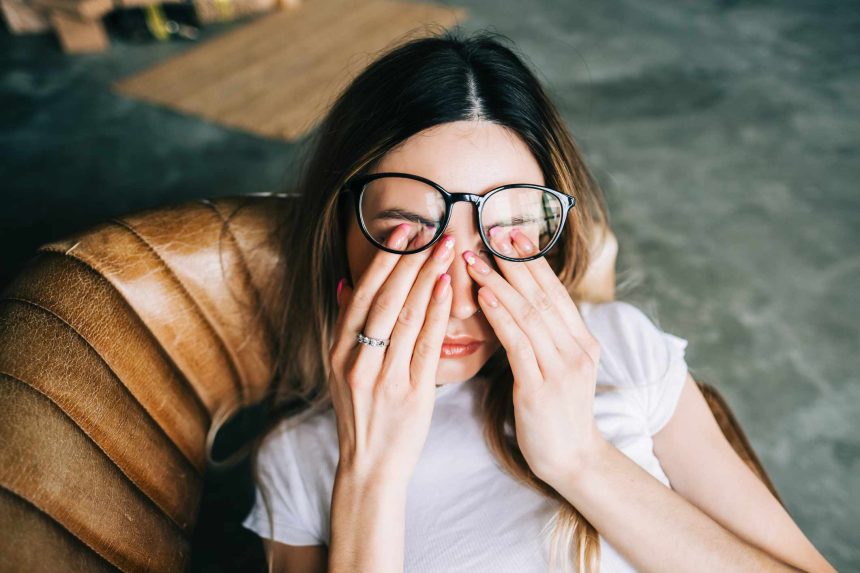Eyesight, or vision, is the ability to see. Lifestyle factors such as eating a well-balanced diet, regular physical activity, taking screen breaks, and avoiding smoking can support eye and vision health.
You can also practice eye exercises regularly to improve eyesight and maintain eye health. Eye exercises are physical exercises that can help to improve conditions such as eye strain, strabismus (crossed eyes), and lazy eye.
They can also help manage symptoms of chronic (long-lasting) eye diseases like glaucoma, which damages the optic nerve in the back of the eye and can lead to vision loss or blindness.
Try the near-and-far focus exercise to maintain clarity of vision when shifting focus between near and far objects.
First, position your thumb about 10 inches away from your face. Stare at your thumb for 15 seconds, then break your focus. Next, look at an object about 10-20 feet in the distance for 15 seconds before returning your focus to your thumb. Repeat this sequence five times.
The figure eight is an eye exercise that helps reduce digital eye strain. Start this exercise by focusing your eyes on a spot or object in front of you that’s 10 feet away. Visually draw a figure eight around the spot and continue your eye movement by tracing the figure eight for 30 seconds.
Switch the direction of the figure eight and repeat the sequence.
When using or watching screens, it is important to blink your eyes often. The repeated action of blinking helps moisturize the surfaces of your eyes and prevent them from becoming too dry.
Studies have found that blinking exercises can change poor blinking patterns and improve symptoms of dry eye by causing modest improvements in tear film quality.
To avoid digital eye strain from screen time throughout the day, make an effort to take a break from your screen with the 20-20-20 rule.
Every 20 minutes, take a break from your screen to look 20 feet away for 20 seconds. This eye exercise gives tired eyes some quick relief from digital devices and screens that cause eye strain.
Palming is an eye yoga exercise that may reduce symptoms of eye fatigue. Research shows that palming may have a vasodilatory (blood vessel widening) effect on episcleral veins (the veins within the outermost layer of the sclera, the white part of the eye).
To perform the palming exercise, start by washing your hands. Quickly rub both palms together until they feel warm. Once warmed, close your eyes and place your palms over your eyes so that they are lightly cupped over the area (without pressure on the eyeballs).
Pencil push-ups can help improve symptoms of convergence insufficiency (CI), an eye condition that makes it difficult for the eyes to focus on nearby objects.
To perform pencil push-ups, hold a pencil between the eyes at arm’s length. Slowly move the pencil toward your nose, focusing on seeing a single image of the pencil. Continue moving the pencil toward your nose until you no longer see the pencil as a single image.
Move the pencil back to the point where it first appeared as a single image and repeat 20 times.
Studies have found that eye-rolling exercises may help reduce stress and improve quality of life. Eye rolling exercises can also help relieve eye strain.
To perform an eye-rolling exercise, sit in a comfortable position and stare straight ahead. Look upward and slowly move your eyes in a circular, clockwise direction. Close your eyes to keep them relaxed.
Finally, open your eyes and repeat the sequence in a counter-clockwise direction.
Visual scanning and tracking exercises, such as a visual twist on the game “I Spy,” can help improve eye coordination. To play “I Spy,” get a friend or family member to choose an object in front of you or in your periphery (side vision) that you’ll need to identify through a series of verbal guesses.
The exercise aims to improve your visual scanning skills. To do this, scan the room using only your eyes while keeping your head still.
The Brock string exercise is another technique for improving eye coordination. Attach one end of a long string to a stationary object, such as a doorknob. Hold the other end of the string underneath your nose and place a small bead on it.
Keep both eyes open and focus your eyes on the bead. Your eyes should see an X shape (formed by the two strings) with the bead in the middle.
The barrel card exercise can help improve symptoms of strabismus (crossed eyes).
Using a red marker, draw three barrels (one small, one medium, and one large) on one side of an index card. Use a green marker to draw the same three barrels on the other side of the card.
Place the card’s edge against your nose, ensuring the largest barrel faces furthest away from your face. Focus your eyes on the large barrel until you see it as a single image and until both colors converge. The other two barrels should also appear to have doubled in size.
Maintain this focus for about five seconds, then repeat the exercise two more times by focusing on the medium and small barrels, respectively.
In addition to eye exercises, there are several other factors that improve and influence eye health. These include:
- Physical activity: Research shows that regular exercise (at least 30 minutes of movement per day) may prevent eye diseases like glaucoma and lower the risk of health problems linked to eye diseases, such as high blood pressure, high cholesterol, and diabetes.
- A nutrient-rich diet: Eat foods with vitamin C, omega-3 fatty acids, lutein, zeaxanthin, zinc, and vitamin E. These nutrients are linked to a lower risk of age-related macular degeneration (AMD), cataracts, and other eye diseases and conditions.
- Avoiding smoking: Avoid or limit smoking, which raises your risk of developing dry eye, AMD, cataracts, and other eye conditions or diseases.
- Regular eye exams: It is recommended that all adults aged 40 and over get a complete eye examination by an ophthalmologist (a medical doctor qualified to diagnose and treat eye diseases). These can detect early signs of eye diseases and changes in vision.
To ensure healthy vision and eyesight, schedule regular eye exams with a qualified healthcare provider, such as an ophthalmologist. You should also see a healthcare provider if you experience any of the following symptoms:
- Eye pain
- Blurry vision
- Frequent headaches
- Double vision
- Worsening or poor night vision
- Light sensitivity
- Sudden appearance of floaters in the eye
- Flashes or patterns of light in the eye
- Eye infection
These symptoms may indicate an eye condition, infection, or disease that needs treatment.
Getting enough movement throughout the day, reducing screen time, and eating a balanced, nutrient-rich diet can help support eye health.
Various eye exercises, such as barrel cards, visual scanning, eye rolls, and pencil push-ups, can also improve eyesight and optimal eye functioning.
In addition to performing eye exercises and practicing healthy lifestyle habits, be sure to schedule regular eye exams with an ophthalmologist, especially if you are 40 or older.






